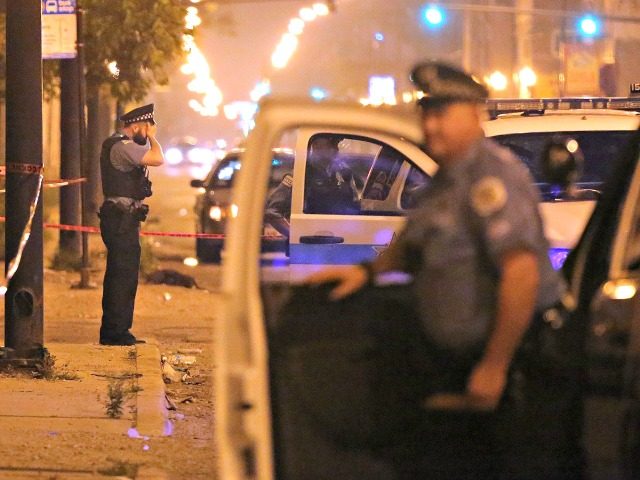Editors at the Washington Post used 34 paragraphs of emotion, drama, and death to hide police forces’ rising ability to reduce lethal shootings amid many dramatic and dangerous confrontations with black men.
“In 2015, the first year The Post tallied these numbers [of police shootings], officers killed 94 unarmed people, the largest group among them black men: 38,” the newspaper reported in the 35th paragraph of a lead article on June 8.
The news of progress came in the next, the 36th, paragraph, which showed that police shootings of unarmed black men and women have dropped by 60 percent:
The following year saw a large drop in the number of unarmed shootings, declining to 51, with 22 of those killed being white and 19 black. The number has remained relatively steady each year since. In 2019, 56 unarmed people were shot and killed by police, with white people accounting for 25 of them, while 15 of them were black.
The article did not combine the numbers to enable readers to recognize the 60 percent decline.
Two paragraphs later, the Post‘s editors and reporters posted a comment acknowledging the progress:
“The reduction in fatal shootings of unarmed suspects is much more of an important factor than the overall number,” said Geoffrey P. Alpert, a criminology professor at the University of South Carolina and co-author of “Evaluating Police Uses of Force.” “That shows real progress. . . . That probably is a better barometer of what’s going on with police in the black community than the total number of fatal shootings.”
Instead of spotlighting the 60 percent drop, the Post‘s headline sprayed gasoline on the national protests ignited by the police killing of George Floyd in Minnesota: “Protests spread over police shootings. Police promised reforms. Every year, they still shoot and kill nearly 1,000 people.”
The 15 black people who were shot in 2019 died in a wide variety of circumstances that blur the supposedly clear lines between armed and unarmed suspects.
For example, in June 2019, Kevin Pudlik was killed after a car chase in Detroit, according to WWJ News Radio:
Police rammed the car several times in an attempt to bring it to a stop. Several police cars finally had the vehicle mostly surrounded and stopped in the middle of the street, but it was able to escape. The driver turned down a side street, dodging several civilian vehicles.
Police eventually cornered the vehicle near a wall and were able to arrest the driver, who tried to run over several officers in the area of Fort Street and West End. Officer Dan Donakowski says that’s when officers began to fire shots. The driver was wounded, while Pudlik was killed. The condition of the driver was not released.
Authorities said two guns were recovered from the car.
And the Forth Worth Star-Telegram reported in October 2019:
Questions continue to intensify and linger following the death of 28-year-old Atatiana Jefferson at the hands of a Fort Worth police officer.
Jefferson was playing Call of Duty with her 8-year-old nephew in their home, according to an attorney hired to represent her family, when she heard a noise outside and looked out of her window at about 2:30 a.m. Saturday. She was shot by an officer who had quietly approached the house through the backyard.
He was identified on Monday afternoon as Aaron Dean. He resigned from the Fort Worth Police Department on Monday morning. On Monday evening, Dean was arrested on a charge of murder, booked into jail and released on bail.
The Washington Post‘s database is here.
The Washington Post hinted at the improved numbers before the 34th paragraph.
The 12th paragraph said, “The number of black and unarmed people fatally shot by police has declined since 2015.”
The 26th paragraph said, “Fatal police shootings are relatively rare events in a country where nearly 40,000 people die from firearms each year. Hundreds of thousands of police officers work in America, most of whom will never fire their guns on duty.”
"A lie used by cynical media manipulators and unscrupulous politicians who understand that racial strife — race hatred — is their path to power, even if it destroys the country." https://t.co/LTQm67uZnk
— Mark Krikorian (@MarkSKrikorian) June 4, 2020

COMMENTS
Please let us know if you're having issues with commenting.